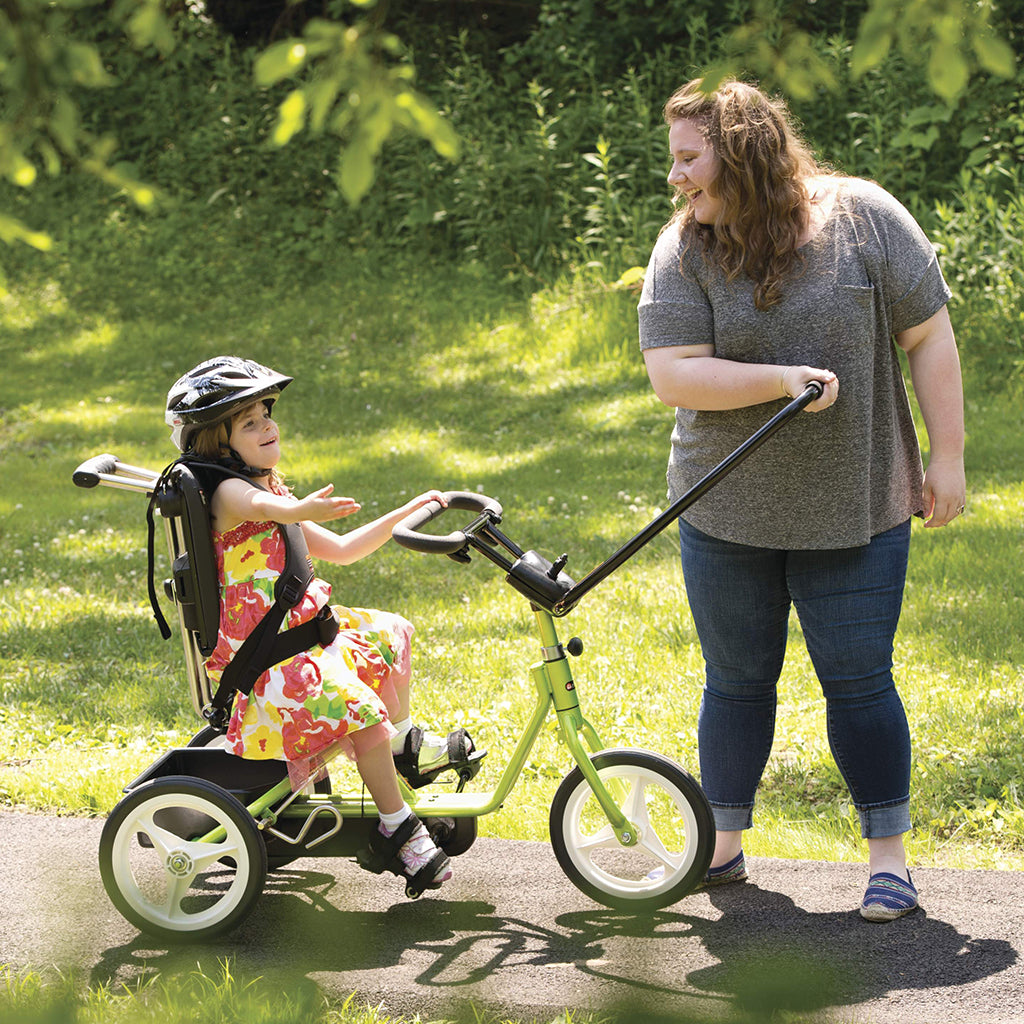Exercise is crucial for overall health. Its benefits range beyond the physical positives of cardiovascular, strength, and bone/joint health but also include the mental health and good feeling that comes with exercise. For children with special needs, participating in an exercise program can be very difficult with commercially available equipment.
Manufacturers of special needs equipment have taken it to heart to remedy this problem and create fun childhood memories including riding a bicycle. Now available on the market are bicycles that can be used as a stationary or an outdoors bicycle (even both) which have been designed to accommodate children with minimal to maximal postural support needs. Adaptive bicycles are a wonderful addition for an active outdoors family, because it truly allows for everyone to be included.
While, everyone knows about the importance of exercise; it unfortunately is not a covered item by most insurance companies. There are many types of adaptive bicycles that range in size and cost. Many times, an adaptive bicycle can be purchased through fundraising or waiver programs. There are many additional options to secure the funding to offset the cost of the desired adaptive bicycle. Many times the United Way can direct a family to organizations to help, local Kiwanis, Knights of Columbus and Lions Clubs also tend to donate money. There are available grants from United Health Care of up to $5000 for adaptive equipment (you don't even have to have UHC insurance to qualify), the Pepsi Refresh Project, and organizations that assist with funding special needs equipment (i.e. Children's Charity Fund).
The purpose of this article is to shed a little more light onto the subject of adaptive bicycles and how to choose one. During this article, bicycle and tricycle are used interchangeably since all adaptive bicycles have a 3 wheel frame to increase the base of support. First, let’s begin with an explanation of some of the important features on adaptive bicycles that can help eliminate some of the options. Rear steer is an option that is standard on some bicycles and an additional accessory on others. Rear steer which may also referred to as caregiver assist or guide bar is a feature that allows the caregiver to control navigation and assist with pedaling as a child is learning. Head support on a bicycle has the same function as on a seating system or stander. It provides the head necessary support to promote an upright head position. Laterals are also an optional accessory to increase trunk support and promote upright positioning. Chest supports are also available to assist with upright trunk positioning. Bicycles also come with a variety of other options like color, baskets, and overall adjustability. Secondly, postural support is offered along a continuum with the adaptive bicycles falling on the range between least to most. The Kaye ToniCross or the AmTryke are at the lower end of support with the Freedom Concepts bicycles offering the most support. Some manufacturers have gone a step further by listing specific diagnoses that are recommended to use the bicycle. This is meant as a guide and not as a one size fits all according to the diagnosis.
Finally, it is important to properly measure a child in order to select the most appropriate size of bicycle. Each manufacturer lists the measurements that are required to be able to determine the size needed. Please pay close attention to this. Tadpole Adaptive also has a link that demonstrates the proper way to measure. Please reference this as needed.
If at any time, it becomes too confusing or difficult to navigate through the world of adaptive bicycles or any other piece of equipment, please do not hesitate to contact us here at Tadpole Adaptive. We are always willing to provide unbiased and informed guidance.








